#fossils 2024
Explore tagged Tumblr posts
Text




More variety of echinoids from different ovale forms, in flint colors on the rock plates.
They looks like dry crusty crumble cookies.
#fossils#galerites vulgaris#fossil collecting#geology#echinoids#echinocorys#echinoid#fossils 2024#flint fossil#flint rock#chert#collecting rocks#galerites & echinocorys
109 notes
·
View notes
Text




The new wave of echinodem. Some in ovale, brown with little remicent of their distant shell pattern. Found great ones in good condition.
The two orange broken parts in orange flint.
Some have clear pattern, others are chunky.
And the other three in gray, with outstanding intact one in darker gray.
All are good example to shown of the varity to finding and for id.
#fossils#geology#fossil hunt#echinoids#echinoid#echinoderm#fossils in germany#fossils 2024#fossil collecting#fossil friday
24 notes
·
View notes
Text

Brachylophosaurus skin impression found by Denver Fowler while prospecting
#more hadrosaur skin!#badlands dinosaur museum#dinosaurs#fieldwork 2024#palaeontology#paleontology#paleoblr#palaeoblr#fossils#fossil#science#Brachylophosaurus#judith river formation
735 notes
·
View notes
Text

Watching the debate rn
#mine#2024 debate#us presidential debate#us politics#fossil fuels#environmentalism#donald trump#kamala harris
461 notes
·
View notes
Text
Fossil Crocs of 2024
Another year another list of new fossil crocodilians that greatly expand our knowledge of Pseudosuchia across deep time. Happy to say that this is my third time doing this now, so I'm not going to bog you down with the details and get right into it.
Benggwigwishingasuchus
Our first entry, sorted by geological age of course, is Benggwigwishingasuchus eremicarminis (desert song fishing crocodile) from the Middle Triassic (Anisian) of Nevada. It was a member of the clade Poposauroidea, which some of you might recognize as also containing such bizarre early croc cousins like Arizonasaurus and Effigia. Also notable about Benggwigwishingasuchus is that it was found in the Fossil Hill Member of the Favret Formation. Why is that notable? Well the Fossil Hill Member preserves an environment deposited 10 km off the Triassic coastline and also yielded fossils of animals like Cymbospondylus, the giant ichthyosaur. Despite this however, Benggwigwishingasuchus shows no obvious signs of having been a swimmer or diver. Instead, its been hypothesized that it was simply foraging around the coast and might have been washed out to sea.
Artwork by Joschua Knüppe (@knuppitalism-with-ue) and Jorge A. Gonzalez
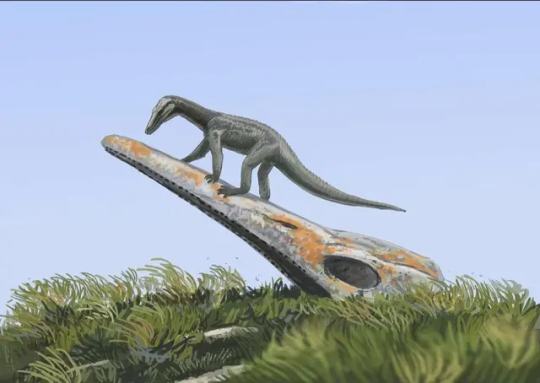
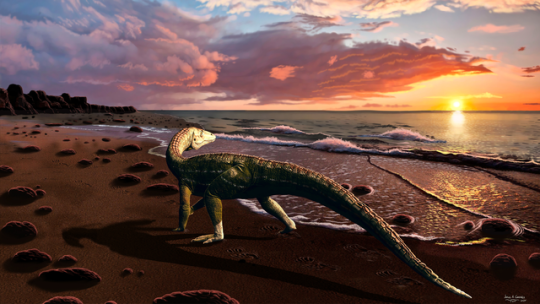
Parvosuchus
Fast forward some 5 million years to the Ladinian - Carnian of Brazil, specifically the Santa Maria Formation. Here you'll find the one new genus on the list I did not write the wikipedia page for: Parvosuchus aurelioi (Aurélio's Small Crocodile). With only a meter in length, Parvosuchus is amongst the smallest pseudosuchians of the year and a member of the aptly named Gracilisuchidae. Santa Maria was actually home to multiple pseudosuchians, including the mighty Prestosuchus (and its possible juvenile form Decuriasuchus), the small erpetosuchid Archeopelta and larger Pagosvenator and one more...
Artwork by Matheus Fernandes and Joschua Knüppe
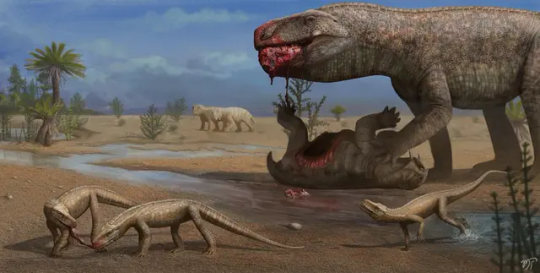

Schultzsuchus
Yup, Santa Maria has been eating good this year. Before the description of Parvosuchus, scientists coined the name Schultzsuchus loricatus (Schultz's Crocodile). Now this one's not entirely new and has long been known under the name Prestosuchus loricatus (by which I mean since 1938). What's interesting is that this new redescription suggests that rather than being a Loricatan, Schultzsuchus was actually an early member of Poposauroidea like Benggwigwishingasuchus. Even if it was no longer thought to be close to Prestosuchus, it was liekly still a formidable predator and among the larger pseudosuchians of the formation.
Artwork by Felipe Alves Elias

Garzapelta
Our last Triassic pseudosuchian and our only aetosaur of the year came to us in the form of Garzapelta muelleri (Mueller's Garza County Shield). It comes from the Late Triassic (Norian) Cooper Canyon Formation of, you guessed it, Garza County, Texas. As an aetosaur, the osteoderms are already regarded as diagnostic, tho unlike some other recent examples there is a little more material to go off from. It's still primarily osteoderms, but at least a good amount and even some ribs.
Artwork by Márcio L. Castro

Ophiussasuchus
Our only Jurassic newcommer is Ophiussasuchus paimogonectes (Paimogo Beach Swimmer Portuguese Crocodile), but arguably you couldn't find a better posterchild for Jurassic crocodyliforms. This new lad is a goniopholidid from the Kimmeridgian to Tithonian Lourinhã Formation, yup, Europe's Morrison. It's anatomy is perhaps not the most exciting, like other goniopholidids it had a flattened, very crocodilian-esque snout and was likely semi-aquatic like its relatives.
Artwork by @manusuchus and Joschua Knüppe


Enalioetes
Another quintessential group of Jurassic crocodyliforms are the metriorhynchoids, however, 2024's only new addition to this clade was actually Cretaceous, specifically from the earliest Cretaceous (Valanginian) of Germany. Like Schultzsuchus, Enalioetes schroederi (Schroeder's Sea Dweller) is new in name only, as fossil material has been found at the latest in 1918 and given the name Enaliosuchus "schroederi" in 1936. This kickstarted a whole series of taxonomic back and forth until the recent redescriptoin finally just gave it a new name and settled things (for now). Looking back I realize that I really need to take the time and fix up the Wikipedia page. Tho I've written its current status, I was kinda limited by being on vacation and never dived into the description section.
Artwork by Joschua Knüppe and Jackosaurus
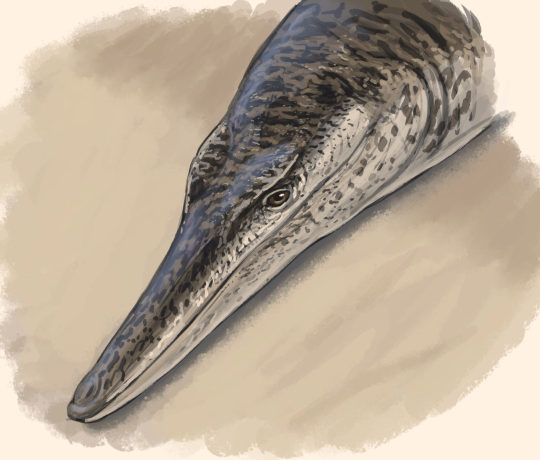

Varanosuchus
Another Early Cretaceous crocodyliform is Varanosuchus sakonnakhonensis (Monitor Lizard Crocodile from the Sakon Nakhon Province), described from Thailand's Sao Khua Formation. It lived around the same time as Enalioetes, but otherwise couldn't have been more different. Where Enalioetes was fully marine, Varanosuchus was more a land dweller as evidenced by the deep skull and long, slender legs. At the same time, some other features, like its more robust limbs compared to its kin, might suggest that Varanosuchus could have still spent some time in the water like some modern lizards. Tho one might be reminded of Parvosuchus from earlier, Varanosuchus is a much more recent example of small terrestrial croc-relatives, the atoposaurids, which are much closer to todays crocodiles and alligators.
Artwork once again by Manusuchus

Araripesuchus manzanensis
Yet another example of a small, gracile land "crocodile" comes to us in the form of Araripesuchus manzanensis (Araripe Basin Crocodile from the El Manzano Farm). And once again, it belonged to a completely different group, this time the notosuchian family Uruguaysuchidae. Now Araripesuchus is well known as a genus, in part due to the work of Paul Sereno and Hans Larsson (who popularized the names "dog croc" and "rat croc" for two species). Tangent aside, A. manzanensis is known from the upper layers of Argentina's Candeleros Formation, corresponding to the Cenomanian (earliest Late Cretaceous). The same locality also yielded A. buitreraensis, from which A. manzanensis can be distinguished on account of its blunt molariform teeth in the back of its jaw. This dentition, which corresponds to a durophageous diet of hardshelled prey, could explain how it coexisted with the related A. buitrensis at the same locality, allowing the two to occupy different niches. There is a neat little animation done for this animal you can watch here.
Artwork by Gabriel Diaz Yantén
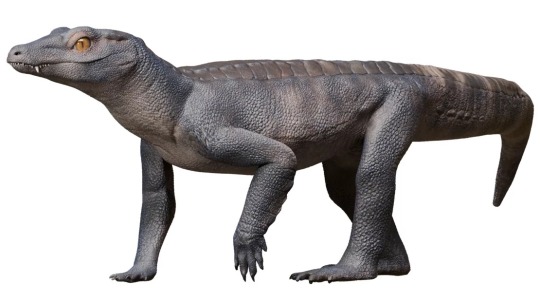
Caipirasuchus catanduvensis
We're staying in South America but moving to Brazil's Adamantina Formation for our next entry: Caipirasuchus catanduvensis (Caipiras Crocodile from Catanduva). This one is a little more recent, tho the age of the Adamantina Formation is a bit of a mess far as I can tell, ranging anywhere from the Turonian to the Maastrichtian. One could also argue that C. catanduvensis is part of the "lanky small croc club" that Parvosuchus, Varanosuchus and A. manzanensis belong to, but I feel that the very short snout helps it stand out from that bunch more easily. Anyhow, Caipirasuchus catanduvensis is a member of Sphagesauridae, related to Armadillosuchus, and herbivorous. What's really interesting tho is that the internal anatomy suggests the presence of resonance chambers not unlike that of hadrosaurs, possibly suggesting that these animals were quite vocal. This could also explain why baurusuchids appear to have had very keen hearing.
Artwork by Joschua Knüppe and Guilherme Gehr
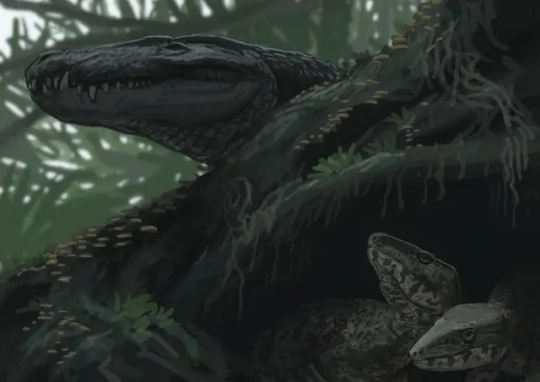

Epoidesuchus
We're staying in the Adamantina Formation for our last Mesozoic croc of the year, Epoidesuchus tavaresae (Tavares' Enchanted Crocodile). Tho also a Notosuchian like Araripesuchus and Caipirasuchus, this one belongs to the family Itasuchidae (or the subfamily Pepesuchinae depending on who you ask), which stand out as being rare examples of semi-aquatic members of this otherwise largely terrestrial group. Epoidesuchus was fairly large for its kin and had long, slender jaws. Like I said, Epoidesuchus and its relatives were likely more semi-aquatic than other notosuchians, something that might explain the relative lack of semi-aquatic neosuchians across Gondwana. They aren't absent mind you, but noticably rarer than they are in the northern hemisphere.
Artwork by Guilherme Gehr

And thus we move into the Cenozoic and towards the end our or little list. From here on out, say goodbye to Notosuchians or other weird crocodylomorphs and get ready for Crocodilia far as the eye can see.
Ahdeskatanka
The first Cenozoic croc we got is Ahdeskatanka russlanddeutsche (Russian-German Alligator), which despite its name comes from North Dakota, specifically the Early Eocene Golden Valley Formation. Ahdeskatanka is similar to many early alligatorines like Allognathosuchus in being small with rounded, globular teeth that suggest that it fed on hardshelled prey. This would have definitely helped avoid competition in the Golden Valley Formation, which also housed a second, similar form not yet named, a large generalist with a V-shaped snout similar to Borealosuchus and the generalized early caiman Chrysochampsa, also large but with a U-shaped snout.
Artwork by meeeeeeee

Asiatosuchus oenotriensis
We had an alligatoroid, so now its time for a crocodyloid. Asiatosuchus has been recognized from the Late Eocene Duero Basin of Spain for a while now, but now we have a name: Asiatosuchus oenotriensis (Asian Crocodile Belonging To The Land Of Wine). Asiatosuchus is a complex genus, most often not really forming a monophyletic clade and likely representing several distinct or at least successive taxa that form the "Asiatosuchus-like complex". Within this complex, A. oenotriensis is thought to have been close-ish to Germany's Asiatosuchus germanicus.
Artwork by Manusuchus

Sutekhsuchus
Rounding out the trio of major crocodilian clades is Sutekhsuchus dowsoni (Set's Crocodile/God of Deception Crocodile), representing our only gavialoid of the year. Originally described as Tomistoma dowsoni in 1920 based on fossil remains from the Miocene of Egypt, Sutekhsuchus has been at times regarded as distinct and at other times lumped into Tomistoma lusitanica. It was one of several early gavialoids to inhabit the coast of the Tethys during the Miocene and appears to have been most closely related to the genus Eogavialis, clading together just outside of the American and Asian gharials. A fun little personal anecdote, I prematurely learned about this one due to a friend highlighting the name in a study on Eogavialis. Never having heard of "Sutekhsuchus" I took to google scholar, where I found a single result: a reference to the then unpublished description, which naturally I ended up eagerly awaiting.
Artwork by Manusuchus and Joschua Knüppe
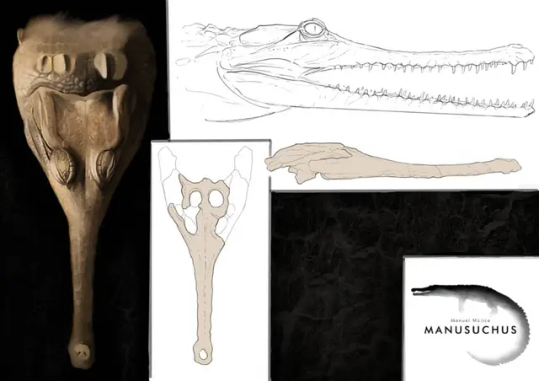
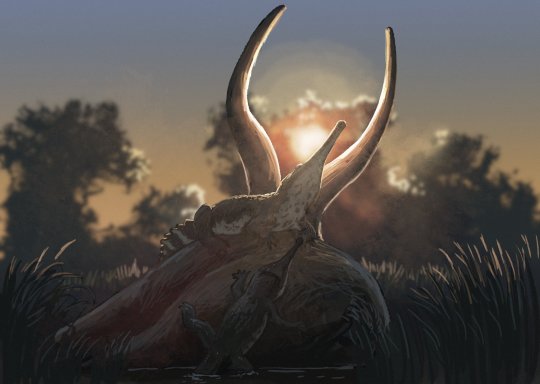
Paranacaiman
Two more and we're done. First, completely arbitrarily, Paranacaiman bravardi (Bravard's Caiman from Parana) from the Miocene Ituzaingo Formation of Argentina. Material of this genus has originally been referred to Caiman lutescens, described in 1912 but now considered a nomen dubium. Paranacaiman is known from limited material only, just the skull table, but that would indicate a "huge" animal. My personal scaling recovered a size of almost 5 meters in length, similar to large black caimans today.
Once again, credit to me

Paranasuchus
Last but not least, Paranasuchus gasparinae (Gasparini's Crocodile from Parana). Coming from the same deposits as Paranacaiman, this one too has been known as a species of Caiman for some time before being assigned its own genus, though it at least got to retain its old species name. Alas, I have not scaled it myself, tho its material is at least more extensive than that of Paranacaiman, including even parts of the snout. A little nitpick because I don't have much to say, but I personally think the name was ill conceived. On its own both Paranacaiman and Paranasuchus are fine names don't get me wrong, but together, coined by the same authors in the same study no less, they strike me as needlessly confusing to non experts. Both are caimans, both are from Parana, so the distinction between "Parana Caiman" and "Parana Crocodile" is entirely arbitrary and doesn't really distinguish them. Not helped by the fact that they are even closely related in the original description. Other than that tho another good addition to our understanding of fossil crocs.
No artwork on this one, but fossil material from Bona et al. 2024

And that wraps up 2024. I hope This post, or my posts throughout the year or even my work on Wikipedia has helped to make these fascinating animals just a little bit more approachable and a massive thanks to all the artists who took their time to create fantastic pieces featuring these incredible animals. Special shout outs to Manusuchus, who diligently illustrated a lot of the featured animals and Joschua Knüppe, who had to listen to me suggest Ahdeskatanka every Sunday for about two months straight now.
Fossil Crocs of 2023
Fossil Crocs of 2022
#paranasuchus#paranacaiman#ahdeskatanka#sutekhsuchus#ophiussasuchus#epoidesuchus#caipirasuchus#araripesuchus#enalioetes#parvosuchus#benggwigwishingasuchus#schultzsuchus#garzapelta#varanosuchus#paleontology#prehistory#palaeoblr#long post#fossil crocs of 2024#paleo#paleonotlogy#crocodilia#crocodylomorpha#pseudosuchia#fossils#2024
260 notes
·
View notes
Text
thank you to that tumblr post that said to create a trollsona in 2023 because a friendgroup of mine did all the quizzes and shit and then descended into goddamn madness and ended up with a goddamn sburb session spreadsheet with lands, classpects, consorts, strife specibi, THE WHOLE SHEBANG even wikipedia diving for Denizen names with THEMATIC MEANINGS and shit it was the most free and healing 24 hours of my life i think of it fondly on this day, apparently the anniversary of Cascade which I didn't learn until AFTER I dredged all this back up. mad world.
#cringe...but free#i never even finished homestuck lmao...#honestly more attached to my new trollsona than i ever was to the one i tried to make in highschool as an actual homestuck fan#this is less because i suddenly love homestuck again and more bc i just wanna see myself in dude form over and over#and really the only thing i had to do was trans him n suddenly i was invested#it was funny i had issues making self inserts and figured i hated myself too much to do it until i figured that one out LMAO#his fetch modus is the spectrobes/pokemon diamond and pearl fossil mining minigame#ill only post him if someone begs#dullblogging#sorry to homestuck post in 2024 it wont happen again officer
280 notes
·
View notes
Text

#dark raiden#raiden#mk#mortal kombat#mk11#mortal kombat 11#shitpost#here we are#2024 will end soon and I am deep into this fossil baby girl#also mk1 is already dead with updates?#Im living under the rock like my husband Dark Raiden so…
110 notes
·
View notes
Text

Yep, these 500 year storms seem to be happening every few years. And if Trump gets elected and his Project 2025 has its way, NOAA won't be around even to warn us of approaching disasters.
Why was Hurricane Helene so bad? Fossil fuel pollution.
Helene also rapidly intensified twice before it reached Florida, because the water in the Gulf of Mexico is off-the-charts warm — much like the rest of the Atlantic. More than 90% of warming around the globe over the past 50 years has taken place in the oceans, and it’s making storms more likely to undergo these rapid intensification cycles. Sea levels in Florida are as much as 8 inches higher than they were in 1950. The speed of that rise is increasing too. This translates to higher storm surge. Across the board, Helene was a hurricane supercharged by climate change. “For decades now, scientists have been warning us that extreme weather events will be exacerbated by this blanket of carbon pollution we’ve been wrapping around our planet,” said Katharine Hayhoe, chief scientist at the Nature Conservancy. “But as a human, it is shocking to see the devastation occurring in front of our eyes, affecting the people and places we know and love.”
Four ways climate change likely made Hurricane Helene worse
DONALD TRUMP"S RESPONSE TO CLIMATE CHANGE...

#hurricane helene#climate change#georgia#florida#fossil fuels#extreme weather events#climate deniers#donald trump#weird donald#drill drill drill#maga#republicans#dave granlund#election 2024#vote blue no matter who
52 notes
·
View notes
Text


Ötzi The Iceman, a natural mummy of a man who lived between 3350 and 3105 BC, who is the inspiration in the physique of Count Orlok in Nosferatu (2024) dir. Robert Eggers. According to prosthetic makeup effects designer David White: "[Eggers] really wanted the feeling of Orlok having had all life sucked from him, every last drop of blood."
27 notes
·
View notes
Text
#global warming#natural disasters#global#weather#fossil fuels#hurricane#floods#drought#heatwave#climate change#landslide#hurricane helene#2024 presidential election#vote blue#politics#republicans#democrats#flooding#tropical storm#national hurricane center#instagram#kamala 2024#blacklivesmatter#black lives matter
43 notes
·
View notes
Text
Kept forgetting to post this here even though I finished it weeks ago 😭
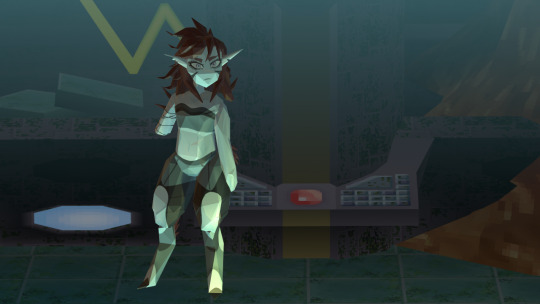




ANYWAYS tried to make a low poly character model in the style of the first Fossil Fighters game for @snufabelis and I think I did a pretty good job for a first attempt at anything other than a bust for 3D modeling :,)
I’m hoping to try doing at least one more model this Art Fight but it’s hard to say since I’m currently battling a sinus infection that’s making it kinda annoying to use my eyes.
Here’s my Art Fight for those who are curious
#my art#art fight#art fight 2024#team stardust#seafoam vs stardust#art fight revenge#art fight attack#fossil fighters#fossil fighters oc#dinaurian#dinaurian oc#oc#original character#character design#fancharacter#3d model#nomad sculpt#low poly model
54 notes
·
View notes
Text




Like the pic before last evening yesterday, found this flat top piece of an brown echinodem fossil top, with flat cut grey open underside. Without many other stones here.
Then on the route back the half piece end of an new aulaxinia sulficera sponge with this wave pattern, was on the back walk from the stone road.
#fossils#fossil collecting#collecting rocks#geology#rocks#flint fossil#echinoid#fossils in germany#fossils 2024#sponge fossil
81 notes
·
View notes
Text




The new mussel prints on flint stones.
Nice size, the biggest from all brachiopode finds with no cracks.
Nice in the grey color, i am so glad this broke so smouth from its surrounding stone to held its form.
Please look into the alike post of it in my other side-blog.
19 notes
·
View notes
Text


Ankylosaurian sacrum from our anky site. Campanian, Judith River fm near Havre, MT.
#badlands dinosaur museum#fossil#fossils#palaeoblr#paleoblr#paleontology#palaeontology#dinosaurs#fieldwork#judith river formation#fieldwork 2024
240 notes
·
View notes
Text
Felon VS Fossil

America is fucking doomed I’m fucking doomed
#Felon can’t answer the GODDAMN questions directly#Fossil can't say a full sentence without stuttering and repeating shit#i wasn't proud to be an american before but now i'm ashamed#2024 presidential election#president trump
54 notes
·
View notes
Text


Can you believe it took me this long to add a touhou to the wheel?
Yuuma for the light blue spot! 🩵
#color wheel challenge#yuuma toutetsu#touhou fanart#touhou#Sunken Fossil World#Unfinished Dream of All Living Ghost#touhou 17.5#touhou project#digital drawing#digital illustration#artist on tumblr#2024
36 notes
·
View notes